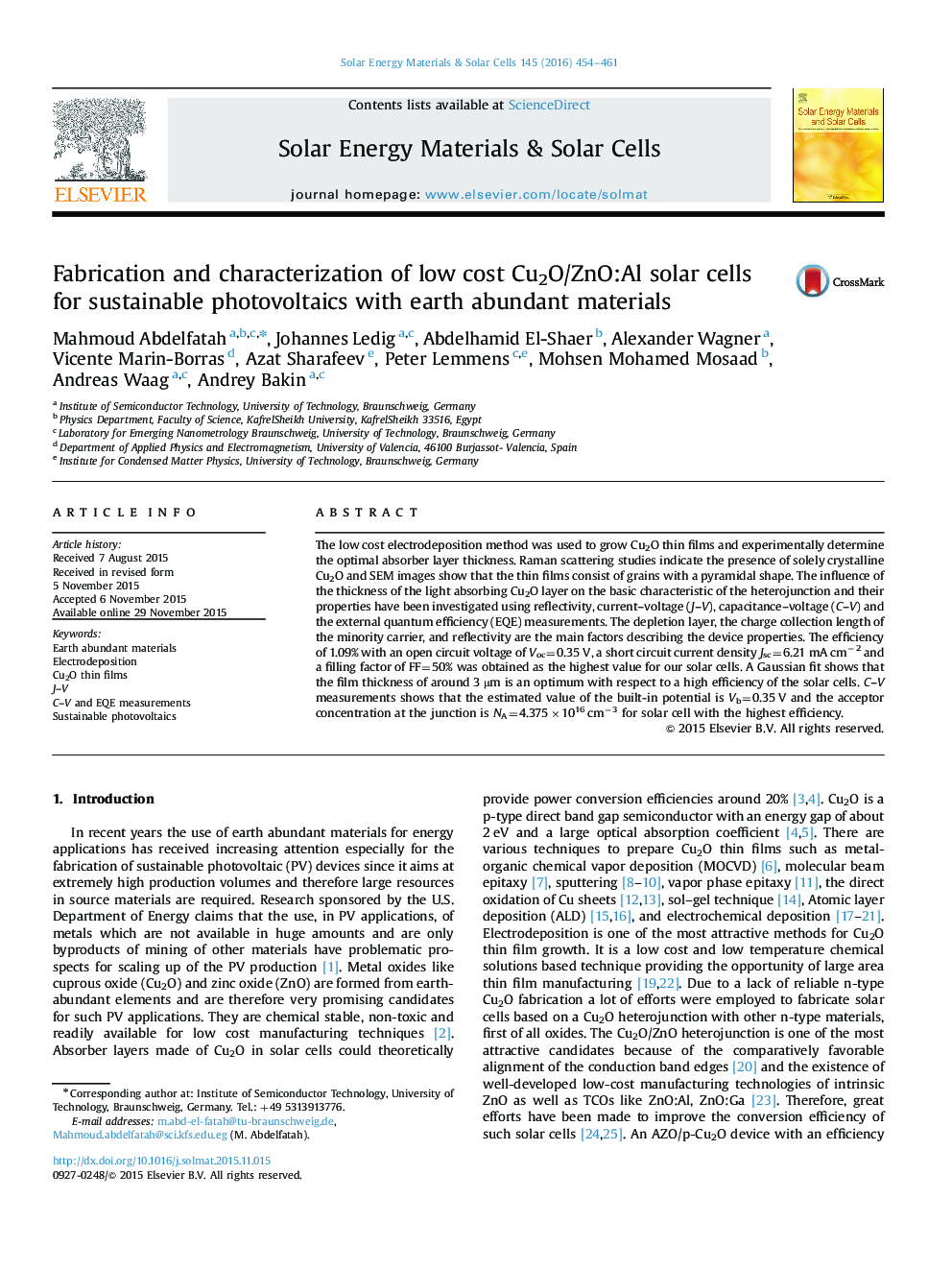| Article ID | Journal | Published Year | Pages | File Type |
|---|---|---|---|---|
| 77703 | Solar Energy Materials and Solar Cells | 2016 | 8 Pages |
•Earth abundant materials for sustainable photovoltaics.•Electrodeposition of Cu2O thin films.•Low cost and low-temperature fabrication method with short energy payback time.•Optimal absorber layer thickness found to be around 3 µm.
The low cost electrodeposition method was used to grow Cu2O thin films and experimentally determine the optimal absorber layer thickness. Raman scattering studies indicate the presence of solely crystalline Cu2O and SEM images show that the thin films consist of grains with a pyramidal shape. The influence of the thickness of the light absorbing Cu2O layer on the basic characteristic of the heterojunction and their properties have been investigated using reflectivity, current–voltage (J–V), capacitance–voltage (C–V) and the external quantum efficiency (EQE) measurements. The depletion layer, the charge collection length of the minority carrier, and reflectivity are the main factors describing the device properties. The efficiency of 1.09% with an open circuit voltage of Voc=0.35 V, a short circuit current density Jsc=6.21 mA cm−2 and a filling factor of FF=50% was obtained as the highest value for our solar cells. A Gaussian fit shows that the film thickness of around 3 µm is an optimum with respect to a high efficiency of the solar cells. C–V measurements shows that the estimated value of the built-in potential is Vb=0.35 V and the acceptor concentration at the junction is NA=4.375×1016 cm−3 for solar cell with the highest efficiency.
Graphical abstract•Electrodeposition allows predominant growth of the crystalline Cu2O phase.•Au/Cu2O/ZnO:Al solar cell devices.•The optimal thickness of the Cu2O thin film as absorber layer is found to be around 3 µm.Figure optionsDownload full-size imageDownload as PowerPoint slide
